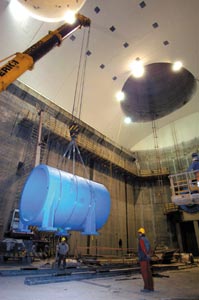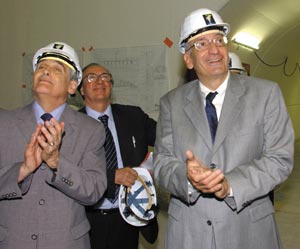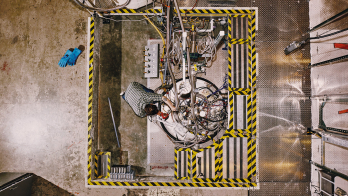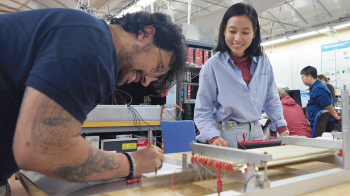
The ATLAS cavern has become the first new experimental cavern for the Large Hadron Collider (LHC) to be handed over to CERN by civil-engineering contractors. On 4 June, this important milestone on the road to the planned start-up of the LHC in 2007 was celebrated in an official inauguration ceremony attended by Pascal Couchepin, president of the Swiss Confederation.
Some 35 m wide, 55 m long and 40 m high, the ATLAS cavern is literally the size of a cathedral – the nave of Canterbury Cathedral in the UK would fit neatly inside. Excavation of the cavern began in 2000 and has pushed civil engineering to new limits.
Once the top part of the cavern had been excavated, it was concreted and the resulting vault suspended from 38 steel cables anchored in galleries 25 m above.

Excavation of the remaining 28 m depth was then resumed and completed by the end of April 2002. The cavern has since been lined with concrete and services such as electricity, ventilation and water have been installed. The handover of the cavern to CERN signals the beginning of the installation of the 44 m long, 22 m high ATLAS detector, with the first components set to be lowered into the cavern later this year.







